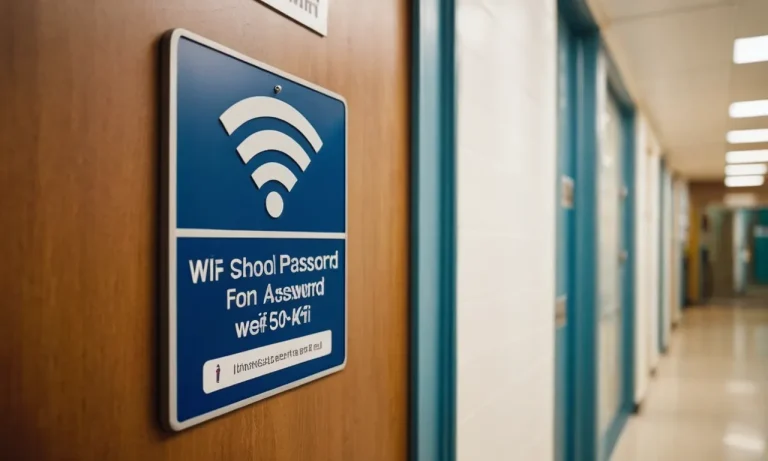As children progress through their academic journey, the transition from elementary to middle school can be a significant milestone. One question that often arises is whether 5th grade is considered part of middle school or not.
This query is not only relevant for parents and students but also for educators and school administrators.
If you’re short on time, here’s a quick answer to your question: In most school districts across the United States, 5th grade is typically considered the final year of elementary school, and middle school typically begins in 6th grade.
However, there are exceptions and variations depending on the specific school district or state. In this comprehensive article, we will delve into the details surrounding this topic, exploring the factors that determine whether 5th grade is part of middle school or not, as well as the potential implications for students and their educational experiences.
Understanding the School System Structure
The transition from elementary to middle school is a significant milestone in a student’s academic journey. As children progress through their education, it’s essential to understand the structure and organization of the school system.
Let’s dive into the differences between elementary and middle schools, grade level configurations, and regional variations.
Elementary School vs. Middle School
Elementary schools typically serve students from kindergarten through fifth or sixth grade, laying the foundation for early childhood education. During these formative years, children learn fundamental skills in reading, writing, mathematics, and other core subjects.
The classroom environment is nurturing and focused on developing essential academic and social skills. 😊
On the other hand, middle schools cater to students in grades six or seven through eight, bridging the gap between elementary and high school. This transition phase is crucial as students navigate the challenges of adolescence.
Middle schools offer a more diverse curriculum, specialized subject teachers, and opportunities for extracurricular activities. The learning environment encourages independence and personal growth as students prepare for the rigors of high school.
According to the National Center for Education Statistics (https://nces.ed.gov/), approximately 24% of public schools in the United States are classified as middle schools.
Grade Level Configurations
While the traditional elementary-middle-high school structure is common, grade level configurations can vary across regions and districts. Some school systems follow a K-8 model, where elementary schools encompass kindergarten through eighth grade, eliminating the need for a separate middle school.
Conversely, other districts adopt a K-6 elementary and 7-8 junior high school configuration.
These variations often stem from factors such as population density, district resources, and community preferences. For example, rural areas with smaller populations may opt for a K-8 model to consolidate resources and provide a more cohesive educational experience. 👍
Regional and District Variations
Educational policies and practices can differ significantly across regions and even within the same state or district. Some states have established statewide guidelines for grade level configurations, while others leave the decision to individual school districts.
Additionally, private and charter schools may follow their own unique models, further contributing to the diversity in school structures.
It’s crucial for parents and students to familiarize themselves with the specific grade level configurations in their local area. This knowledge can help them make informed decisions and prepare for the transition between school levels.
Consulting with school administrators, counselors, or referring to district websites can provide valuable insights into the local educational landscape. The U.S. Department of Education’s website (https://www.ed.gov/) offers resources and information on various educational topics, including school structures and grade level configurations.
The Role of 5th Grade in the Educational Journey
The 5th grade marks a pivotal point in a student’s academic journey, serving as a transitional bridge between elementary and middle school. This year is a crucial period of growth and development, where students are challenged to expand their knowledge and hone their skills in preparation for the next phase of their education.
Transitional Year
The 5th grade is often referred to as a “transitional year” because it serves as a stepping stone between the structured environment of elementary school and the more independent learning environment of middle school.
During this time, students begin to experience greater autonomy and responsibility, both academically and socially. They are introduced to more complex concepts and are expected to demonstrate a higher level of self-discipline and time management.
According to a study by the Education Week Research Center, nearly 75% of educators believe that the transition from elementary to middle school is a significant challenge for students.
Academic Expectations
In the 5th grade, academic expectations become more rigorous, and students are held to higher standards across various subject areas. They delve deeper into core subjects like mathematics, reading, writing, and science, laying the foundation for more advanced concepts they will encounter in middle school.
Teachers often introduce new learning strategies and study skills to help students develop independent learning habits and critical thinking abilities. According to the National Council of Teachers of Mathematics, by the end of 5th grade, students should have a solid understanding of fractions, decimals, and basic algebraic concepts.
Social and Emotional Development
While academic growth is a significant focus in the 5th grade, social and emotional development also plays a crucial role. This year marks a time of significant personal growth and self-discovery for many students.
They begin to navigate more complex social dynamics, form deeper friendships, and develop a stronger sense of self-identity. Teachers and school counselors often incorporate lessons and activities that foster emotional intelligence, conflict resolution skills, and positive self-esteem.
According to a study by the Collaborative for Academic, Social, and Emotional Learning (CASEL), students who receive social-emotional learning (SEL) instruction demonstrate better academic performance, improved attitudes and behaviors, and increased motivation to learn. 😊
The 5th grade is undoubtedly a pivotal year that shapes a student’s future academic and personal success. By providing a well-rounded educational experience that balances academic rigor with social-emotional learning, schools can equip students with the necessary skills and mindset to thrive in middle school and beyond.
It’s a year of growth, discovery, and preparation – a true stepping stone on the path to lifelong learning.
Factors Influencing the Classification of 5th Grade
When it comes to determining whether 5th grade is considered part of middle school or elementary school, there are several key factors that come into play. These factors can vary depending on the school district, state guidelines, and even the physical layout of the school buildings themselves.
Let’s dive into each of these elements in more detail:
School District Policies
One of the primary factors influencing the classification of 5th grade is the policies set forth by individual school districts. Some districts may consider 5th grade to be the final year of elementary school, while others may include it as part of the middle school curriculum.
These policies can be influenced by factors such as funding, staffing, and educational philosophies. According to a report by Education Week, approximately 24% of U.S. school districts classify 5th grade as part of middle school.
State Guidelines
In addition to school district policies, many states have their own guidelines and regulations regarding the classification of grade levels. These guidelines can influence how districts structure their educational programs and determine the boundaries between elementary, middle, and high school.
For example, some states may mandate that 5th grade be considered part of elementary school, while others may leave it up to individual districts to decide. It’s crucial for parents and students to familiarize themselves with their state’s guidelines to better understand the educational landscape.
Physical School Buildings
Believe it or not, the physical layout and configuration of school buildings can also play a role in determining whether 5th grade is classified as middle school or elementary school. In some cases, 5th graders may attend classes in the same building as younger elementary students, while in other instances, they may share facilities with older middle school students.
This can influence factors such as curriculum alignment, extracurricular activities, and overall school culture. According to data from the National Center for Education Statistics, approximately 18% of public elementary schools in the U.S. include 5th grade as part of their grade span.
Ultimately, the classification of 5th grade as middle school or elementary school can vary greatly depending on the specific circumstances and factors at play. It’s essential for parents, students, and educators to stay informed about their local policies and guidelines to ensure a smooth transition and optimal educational experience.
😊
Implications for Students and Parents
The decision of whether or not to consider 5th grade as part of middle school can have significant implications for both students and parents. It’s crucial to understand the potential impact this transition may have on the curriculum, extracurricular activities, and the overall preparation for the next phase of education.
Curriculum and Instruction
If 5th grade is considered part of middle school, the curriculum and instructional methods may shift to align more closely with the middle school model. This could mean a greater emphasis on subject-specific classes taught by specialized teachers, rather than the traditional elementary school approach of having a single classroom teacher for most subjects.
According to the Education Week, approximately 24% of schools in the United States include 5th grade as part of their middle school structure.
Moreover, the curriculum may become more rigorous and demanding, reflecting the increased academic expectations of middle school. This transition can be both exciting and challenging for students, as they navigate the complexities of a more advanced curriculum while simultaneously adjusting to a new school environment.
Extracurricular Activities
Middle schools often offer a wider range of extracurricular activities compared to elementary schools. If 5th grade is considered part of middle school, students may have access to more diverse opportunities, such as sports teams, clubs, and after-school programs.
These activities can foster personal growth, explore new interests, and develop valuable skills beyond the classroom.
However, it’s important to note that the availability and accessibility of extracurricular activities may vary between schools and districts. Parents should research and inquire about the specific offerings at their child’s potential middle school to ensure they align with their child’s interests and needs.
Preparing for the Transition
Transitioning from elementary school to middle school can be a significant milestone for both students and parents. If 5th grade is considered part of middle school, it can provide an opportunity for gradual adjustment and preparation.
Schools may offer orientation programs, counseling services, or workshops to help students and families navigate the changes and expectations that come with middle school life.
Parents can play an active role in supporting their children during this transition by:
- Communicating openly about their child’s concerns and expectations
- Encouraging their child to participate in transition activities or programs offered by the school
- Fostering independence and organizational skills to help their child adapt to the new academic demands
- Staying informed about the school’s policies, procedures, and resources available to support their child’s success
By working together with the school and their child, parents can help ensure a smoother transition and set the stage for a positive middle school experience.
Conclusion
The question of whether 5th grade is considered middle school or not is a complex one, with various factors influencing the classification. While the majority of school districts in the United States consider 5th grade as the final year of elementary school, there are exceptions and variations based on regional and district policies.
Ultimately, understanding the structure of the school system and the role of 5th grade in a child’s educational journey is crucial for parents, students, and educators alike. By being informed and prepared, families can navigate this transitional period smoothly, ensuring that their children receive the appropriate support and resources to thrive academically, socially, and emotionally.






